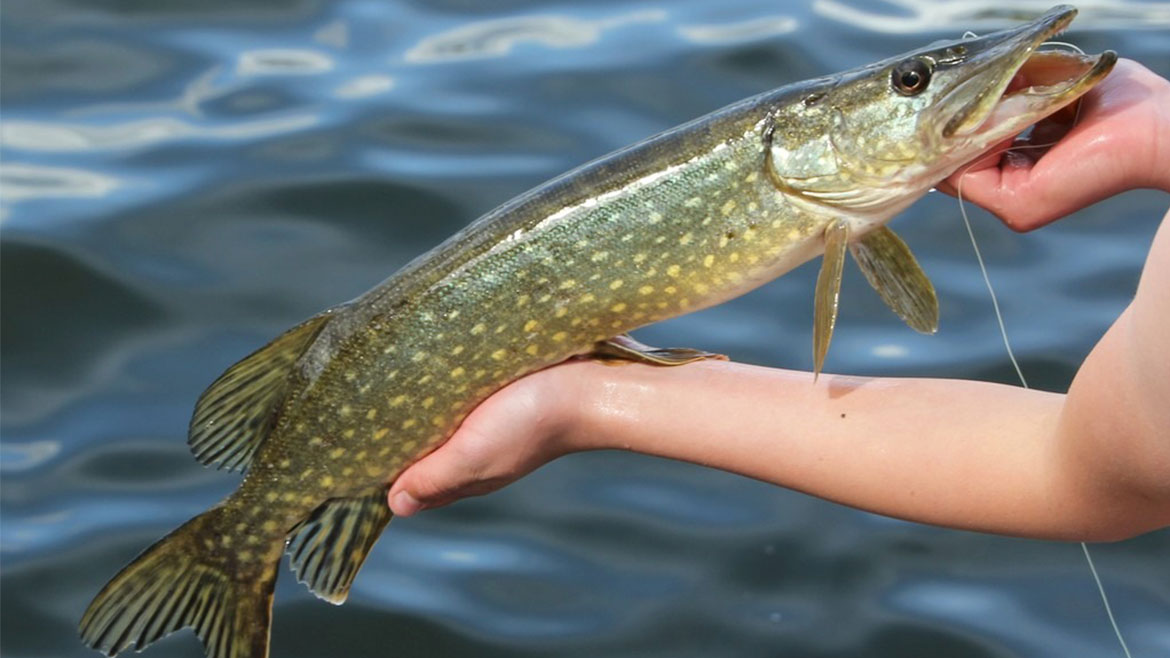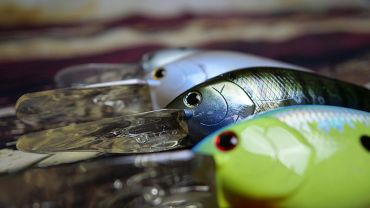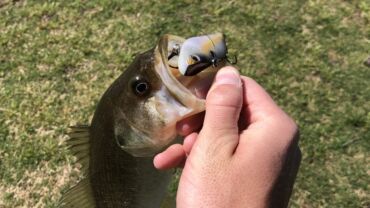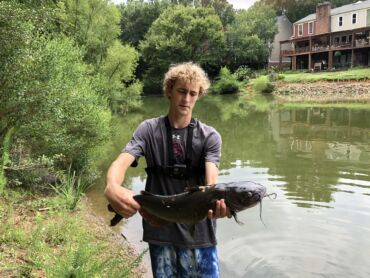One of the most popular baits of all time is the spinnerbait. Offering a unique and timeless profile, the spinnerbait is objectively one of the greatest baits of all time. It is capable of catching fish in almost any and every body of water, from freshwater to saltwater. Some popular species that like to attack spinnerbaits are largemouth bass, pike, musky, striped bass, bluefish, and many more. If a fish likes to chase shiny live minnows or bait, then the chances are high that the fish could be convinced to bit a spinnerbait.
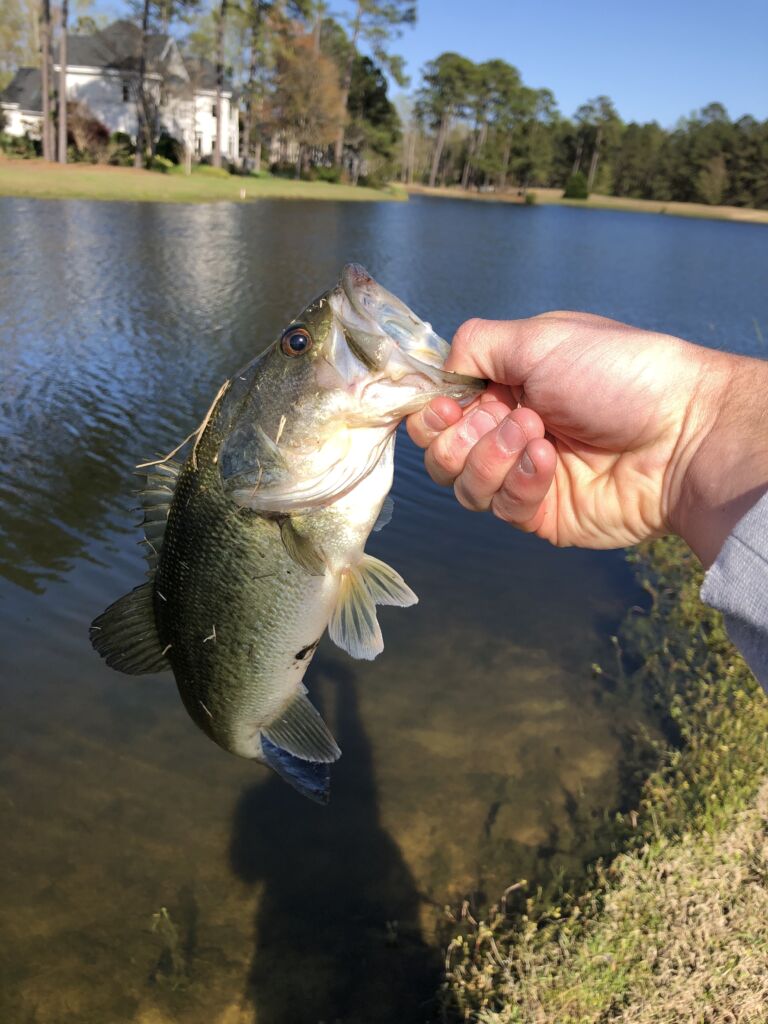
Tips and Tricks for Using Spinnerbaits
In this article, I’m going to provide you with various tips and tricks that should allow you, as the angler, to know how to use a spinnerbait. In addition, I’m also going to break down a variety of different types of spinnerbaits, such as single or double-bladed spinnerbaits, and how to fish with spinnerbait, including how to reel a spinnerbait. I will get more into this later, but I cannot overstate the value of a spinnerbait.
Personal Experience
For example, if I pull up to a new spot to fish for largemouth bass, especially if it is in the warmer months, I can pretty much guarantee that you’ll find me with a spinnerbait tied on. Because of my own success on spinnerbaits and the success of millions of other anglers, I think it is worth learning more about.
Recommended Resource
One more thing before I get into the meat of the article. In conjunction with knowing how to use spinnerbaits, I would highly recommend using the Fishbox app. This app is loaded with all sorts of extremely valuable fishing information and data that should be able to make your day on the water a little bit more enjoyable. The Fishbox app takes various metrics from different things like weather, solar and lunar patterns, and more to figure out what will work best and when. That way, before you even leave your house, you have a pretty good idea of how the fish will be biting and where. So take advantage of this resource and download the Fishbox App today.
Get your personalized fishing map
Answer a quick quiz and get your own personalized fishing map
How to Fish a Spinnerbait
Just as important as knowing what bait to choose is how to actually fish the bait you have chosen—in this case, the spinnerbait. For this particular section, I’m going to break it down into three parts:
- The setup for fishing spinnerbaits, including what kinds of rods, reels, and line you might need.
- How to know what type of spinnerbait to choose and use given the conditions you are presented with.
- How you can actually modify and fine-tune your spinnerbaits, so they are more effective in the water column.
Gear for Fishing Spinnerbaits
Now, for the first section: the gear. Spinnerbaits, for the most part, aren’t the heaviest baits; however, they are weirdly shaped. They are so unique from almost any other kind of bait that you almost have to put them in their own category for gear. Since spinnerbaits have a very unique and weird shape, they tend to catch a lot of air when casting them, meaning they can’t be cast as far as something like a lipless crankbait.
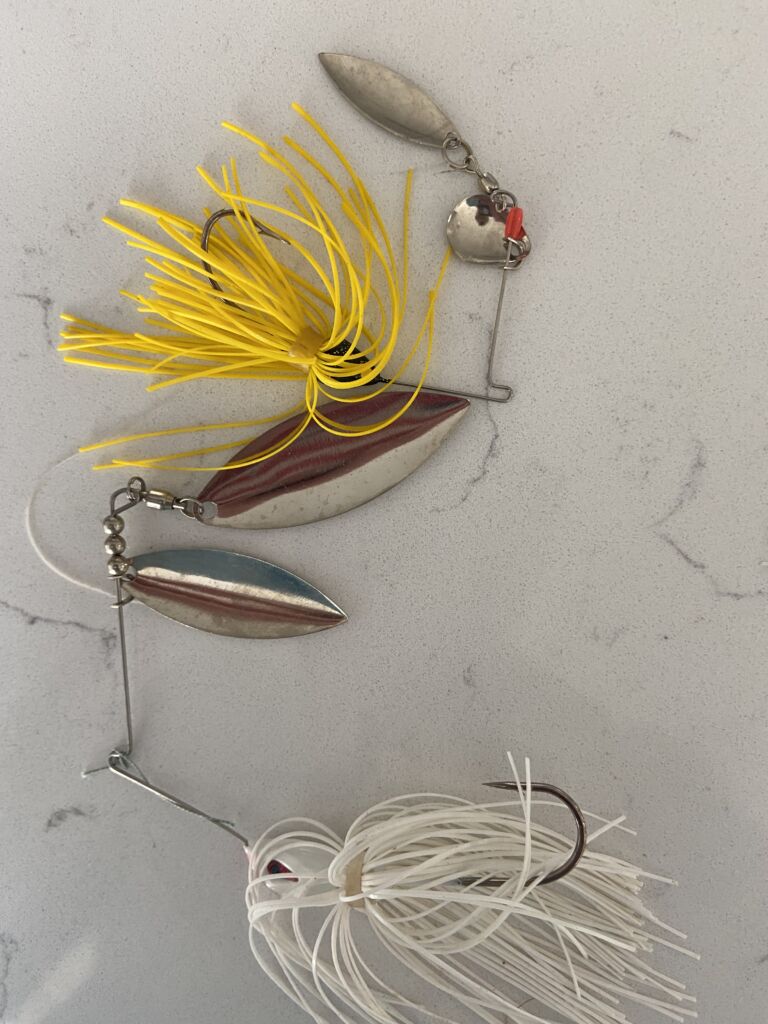
This being said, since you normally use spinnerbaits to cover a lot of water, I would recommend a longer and stiffer rod. Now, it is obvious you don’t want to use a surf rod, but I could recommend something like a 6.5-foot or 7-foot Ugly Stick GX2 that is medium weight. This rod gives plenty of finesse but also gives you the strength and backbone to make some monster casts.
For the reel, I would recommend something with a decent bit of line capacity because you are making longer casts. For me, that is going to be the Penn Fierce 2 or 3 size 4000. This reel has plenty of capacity and also a decent bit of drag for its size if you really need it. This is particularly relevant for fishing for saltwater species like striped bass (which also can be freshwater) and bluefish.
Line is where things can get a little bit trickier because it really just depends on where you are planning to fish with your spinnerbait. If you are freshwater pond fishing for largemouth, you really don’t need to go above 20-pound braid. Nothing is going to break you off—or at least should break you off. Now if you are fishing saltwater with bigger fish or toothier fish like bluefish, I would size up closer to a 30-pound braid. The great thing is that the Penn Fierce can accommodate for this while still giving you plenty of line capacity.
The only other thing I would add to this subsection is that if you are fishing for something with sharp teeth that could cut through line (like a bluefish), I would add a wire leader. I normally prefer a 20–30-pound wire leader, and that is more than enough.
Read also: Fighting a Fish Even When You’re Outmatched
Choosing the Right Spinnerbait
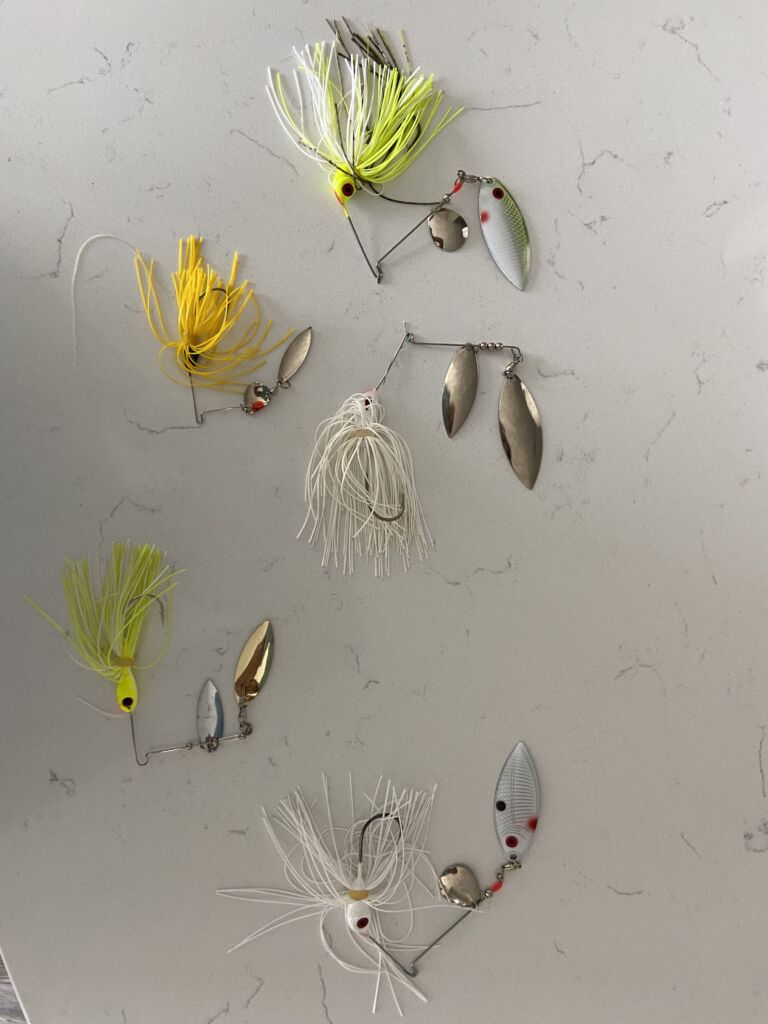
For the second section: choose the right spinnerbait. Choosing the right spinnerbait is a huge factor in determining whether or not you will have a successful day on the water. For this section, I’m going to break it down into three subsections—color, size, and blade type.
First up: color. As a general rule of thumb for spinnerbaits, if the water is clearer and not as murky, I would strongly recommend using a more natural color or style. Perhaps a baitfish color like shad. These more translucent colors tend to perform better in clear water as they don’t unnaturally stick out like other exotic colors might. For darker water, it’s quite the opposite. Use colors that stick out like a sore thumb. You want the fish to be able to see your bait even through the murkiness. Colors like chartreuse and firetiger work exceptionally well. Again, these are not guarantees, and you may have to change from these tactics, given what is going on. Just be ready and on your feet for whatever Mother Nature throws at you. To that point, I would advise preparing well and bringing both colors of spinnerbaits for clear and dark water that way, you’re set either way.
Second: the size of your spinnerbait. The size of the spinnerbait you fish with heavily depends on what is in the body of water you are fishing in and the environment (things like current and depth). Let’s start with the basics. If you want your spinnerbait to go deeper, either slow your retrieve (but make sure the blades are still engaged—you know this by feeling more tension in the line) or get a heavier spinnerbait. Additionally, if you are fishing with a spinnerbait in a river with a current, I would also recommend a heavier spinnerbait. Another important piece of information is that more blades equate to more water caught. This being said, if you’re fishing a big spinnerbait in a place with a lot of current, it’s going to catch a ton of water as opposed to smaller blades. So, for faster-moving water, you’re going to want smaller blades and vice versa. The last piece of advice I would offer in this subsection is based on the size of the species in your body of water and the bait they feed on. If you know you’re fishing a small pond with historically small bass, then don’t show up with a giant spinnerbait. In the same way, don’t go hunting 40-inch stripers with a tiny spinnerbait. These fish want what feels normal. Remember, you are trying to trick them into biting something that looks like a fish or a couple of fish.
Modifying Your Spinnerbait
Now, for the third and final subsection: how to modify your spinnerbait to yield better results. Once again, I have three smaller subsections to help make my point: blades, trailers, and skirts.
First: blades. I briefly touched on this before, but the bigger the blade, the higher the water resistance and the slower it will go through the water. If you want your spinnerbait to fish faster, then size down the blades. Additionally, swap out these blades based on the current. If the current is fast, I would recommend sizing down the blades. Another thing you could change is the colors—which are primarily silver or gold or both. Try different variations of patterns of these. Try only gold, only silver, and both. This can give you a better grasp of what the fish want. Personally, I prefer a two-bladed spinnerbait with one blade gold and the other silver. The last thing you can modify is the number of blades. Almost everyone I know fishes two blades, but some people will fish one. Again, just experiment with this and see what the fish want. Additionally, if you want even less drag, fish with one small blade. Just remember, the lower the number of blades, the less it will shine. Personally, I want that thing to shine as much as possible to draw the most attention from predators.
Get your personalized fishing map
Answer a quick quiz and get your own personalized fishing map
Second: trailers. Although I have not utilized these very much in my experience, I have friends who swear by adding trailers on their spinnerbaits. For those that don’t know, a trailer is a soft plastic that is normally threaded onto the hook of the spinnerbait to make it more lifelike and appealing to fish. Most trailers are some kind of natural imitation, such as a lizard or crawfish. This adds extra incentive for the fish to bite the lure. An important note, however, you may need to trim the size of the soft plastic down so that it can fit on the hook better and not dominate the bait entirely. The whole point is that the trailer acts as a natural complement to the spinnerbait, thus making it more effective—so don’t overdo your trailer. One more quick note before I move on—I would suggest using natural colors on these trailers, such as green pumpkin, watermelon green, watermelon red, etc.
Third and last: skirts. To be honest, you can’t really modify your skirts that much on spinnerbaits. The only thing you really can do is either swap the skirt out entirely to get a better color or trim the skirt so it is a bit smaller. A lot of anglers will actually trim the skirt down to reveal the hook a bit better for the purpose of more hook-ups. In my experience, the skirt has little to no effect on hook-ups, and I don’t tend to change the skirts around that much at all.
I hope from reading this entire section you now have a better idea of how to use a spinnerbait when fishing.
When to Use a Spinnerbait
Knowing when to use a spinnerbait is almost just as important as knowing how to work a spinnerbait while fishing. Knowing when to use these kinds of bait can make a difference between an extremely successful day of fishing and an extremely poor day of fishing. This being said, let’s get into the details of how you can know better when you should be fishing with a spinnerbait.
Best Times and Seasons to Fish a Spinnerbait
There are two main sections to this point in the article—the best times and seasons to fish a spinnerbait and the ideal conditions to fish a spinnerbait.
Seasons
Let’s start with the seasons. Since spinnerbaits are one of the most versatile baits on the market, they can really be used year-round. Once the water starts warming up in late February to early March is when you should begin, and you shouldn’t put away your spinnerbaits until late fall, like November. However, this is just a rule of thumb, and you can certainly catch fish on spinnerbaits outside of these months in colder water. The point I’m trying to make is that spinnerbait fishing will just objectively be better in warmer water with more reactive fish. Even in my own experience, this has held true.
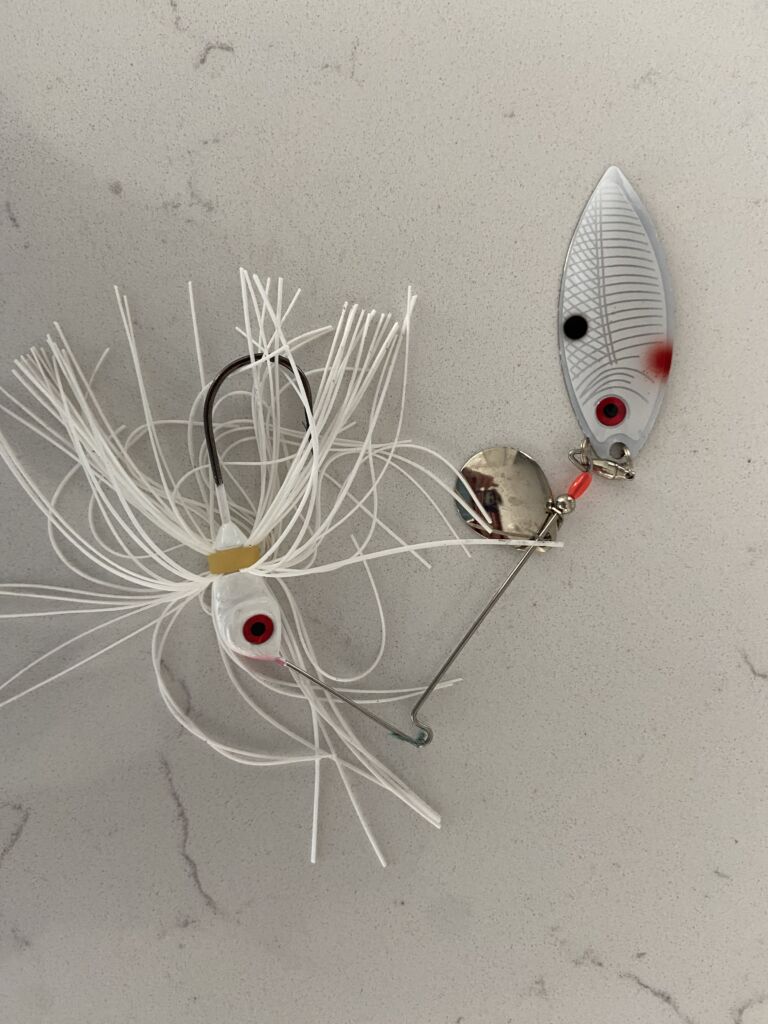
Time of Day
In terms of time of day, spinnerbaits are most effective during dawn and dusk. The lower light conditions disrupt the fish’s view a bit better than usual, so you get a better chance at a reaction strike. I will note that these are not the only times that you can catch fish on a spinnerbait. Fish will hit spinnerbaits all day long in some instances, and others they won’t. I’m simply saying, as a general rule of thumb, spinnerbaits are fished better at dawn and dusk.
Read also: The Best Time to Fish: A Guide to Fishing Seasons and Optimal Times for a Great Catch
Ideal Conditions to Fish with Spinnerbaits
Second, the best conditions to fish with spinnerbaits.
Water Temperature
In terms of water temperature, spinnerbaits are best used when it ranges from 55 to 75 degrees Fahrenheit. Again, this data supports the point I made earlier that spinnerbait strikes are reaction strikes, so the water can’t be too cold, or else the fish will be lethargic.
Weather Conditions
In terms of weather conditions, cloudy or windy days are going to be your best bet. The reason for this is that the fish’s view of the bait is distorted, and they can’t as clearly tell what they are eating. This serves to the angler’s advantage as they have a bit more of a jump on the fish. Once again, I know you can catch fish on clear sunny days; I’ve done it myself. I’m simply recommending the best weather for you to try fishing with spinnerbaits.
I hope this point in the article gives you readers a better idea of when you should be using spinnerbaits.
Common Mistakes and How to Avoid Them
As with any type of fishing, spinnerbait fishing included, there are always mistakes to avoid. In this section, I’m going to go over a few so you don’t have to make those same mistakes myself and plenty of other anglers have made.
Mistake #1: Using the Wrong Size Spinnerbait
One of the biggest mistakes I see people making when fishing with spinnerbaits is that they are simply using the wrong size of spinnerbait. While some people might be tempted to think that it wouldn’t have that big of an effect, I can tell you from personal experience that it absolutely can have THAT big of an effect.
- Presentation: Using a spinnerbait that is too small or too big, depending on where you are fishing, can really throw off the presentation of the bait, which would scare fish off.
- Missing Fish: Additionally, if you are fishing with a spinnerbait that is too big or too small, you could be missing a whole class of fish. For example, if you are fishing a pond with a large spinnerbait and there are only smaller bass in that pond, your chances dramatically decrease that you hook a fish (this also goes the other way with fishing spinnerbaits that are too small).
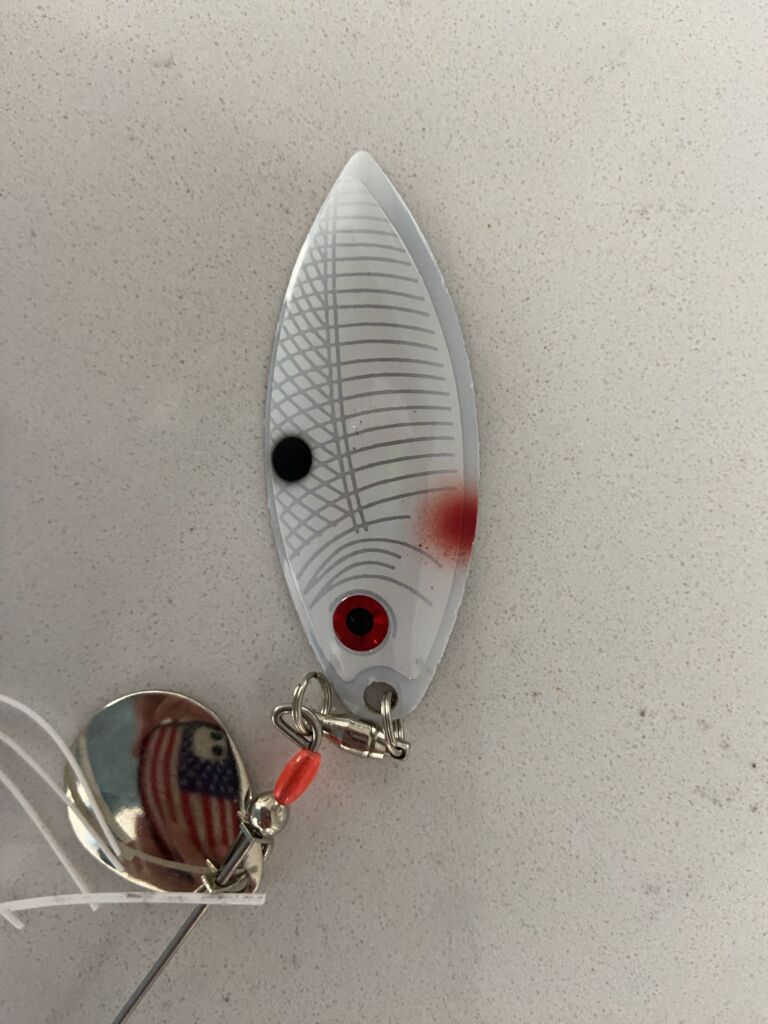
Mistake #2: Inappropriate Retrieve Speeds
The second common mistake I see anglers make when fishing spinnerbaits is having inappropriate retrieve speeds for the spinnerbait. They are either going way too fast or way too slow.
- Too Fast: If retrieved too fast, your bait looks too shiny and unrealistic.
- Too Slow: If it’s being retrieved too slowly, the blades won’t even be engaged—good luck catching a fish on that.
This being said, mix up your retrieves—sure—try some fast ones and some slow ones, but normally that “Goldilocks zone” is where you’re going to find your bites.
Mistake #3: Not Using Spinnerbaits Effectively in Murky Water
The third and final common mistake that I see is people not using spinnerbaits in murky water effectively. If the water is murky, you should know that your bait is going to have to stick out a little more than usual.
- Modifications: Perhaps this comes through modifying your spinnerbait with some of the things I talked about above.
- Retrieve Speed: Maybe this means a faster retrieve so your blades can spin and shine more.
Either way, as a great angler, you must be aware of your situation and adapt to overcome the difficulties.
This being said, I hope sharing these common mistakes will help you guys avoid them and thus have better days on the water.
Conclusion
I hope you guys have enjoyed reading this article and that it helps you grow in your own knowledge of spinnerbait fishing. I feel like I don’t get to tell you guys this enough, but thank you so much for reading my articles, it truly means the world, and it is such a gift from the Lord to be able to write about something I’m so passionate about. Let’s remember to take care of the Lord’s gift to us in how we treat our waters. I hope you have a great rest of your day and, as always, good luck and tight lines!
Get your personalized fishing map
Answer a quick quiz and get your own personalized fishing map
